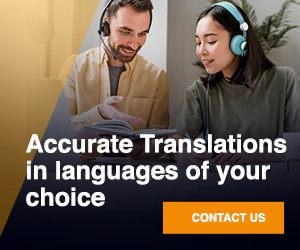Transcription
Why Machine Translation Can Never Replace Human Translation
Six decades ago scientists from Georgetown University and IBM designed a revolutionary system that could perfectly translate sentences from Russian to English. Buoyed by their success, the scientists assertively claimed that the translation industry will be completely taken over by the machine in a few years.
Fast forward 60 years and you’ll find that the translation industry has not taken off as it was predicted. Yes, there are few apps that take a sample text and translate it into the target language, but is it enough? According to a software evaluator, the highest accuracy achieved by a translation program is 80%. This may be enough to be interesting, but not enough to be useful, say experts.
Why hasn’t machine translation taken off as predicted?
The answer becomes quite clear if you take a look at the Georgetown-IBM experiment. It was revealed in mid-1900s that the effort needed to translate just one portion by a computer is equivalent to more than twice the instructions needed to put a guided missile to flight. Staggering isn’t it?
One reason behind all this complication is the fact that human languages do not sync with computer algorithms as readily as some of the other disciplines such as math. All you need to do for a computer to master these disciplines is to program a set of rules that remain the same at all times. But human language isn’t math or to be more precise, they don’t work like math. And they don’t have perfect one-to-one correspondences.
Of course, technological advances can help machines get better at dealing with the above. And yes, you can also code grammatical rules for a language into the software, add huge caches of synonyms into a database, or even take the content from multilingual websites all over internet and develop a phrase-level machine translator. But these programs can’t really pass the language test with 100% accuracy. This is because there is no way that you can program them to make congruity judgments that a translator makes at every point of time to put across the correct meaning of a source-text or phrase in the target language.
The bottom-line is, you can rely on a machine for trivial or non-critical translation — ones that don’t call for a perfect translation. For more critical projects that target the global audience, you can’t trust a machine translation and have to hire the services of a proficient human translator or a translation service provider.

